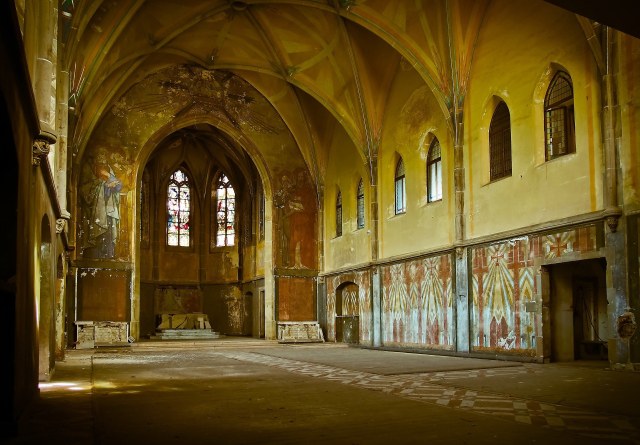An abandoned US church. From Pixabay

Barack Obama called them “bitter”, Hillary Clinton called them “deplorable”, but a better description for some parts of the American working class is “unhappy”.
The US is experiencing a surge of deaths attributed to suicide, drug overdoses and alcohol poisoning – a phenomenon concentrated among less educated whites. As Carol Graham says in an op-ed for Brookings, it is crisis without parallel – either within the United States or internationally:
“The trend of rising rather than falling mortality rates among an important demographic group is unique to the US among rich countries… My research finds that poor blacks and Hispanics are much more optimistic about their futures than are poor whites and, in turn, mortality rates have not increased the same way among minorities.”
What could explain this difference?
“Place is… important. Metropolitan areas on the coasts are, on average, much more economically vibrant and racially diverse, and have healthier behaviors and lower mortality rates than do rural areas in the heartland.”
But it goes a lot deeper than that:
“Minorities are also more likely to… have stronger social support in families, communities, and churches. Blue-collar whites are more likely to live in places where identities, friendships, and social support were traditionally tied to the mine or the factory, and where distance and climate, in addition to fading employment opportunities, make it difficult to form new community ties and other forms of social support.”
Writing for Vox, Lyman Stone points to the decline of another type of community institution: the church – specifically, the churches of the Protestant ‘mainline’. Theologically and politically moderate (if not outright liberal), it was these denominations that most defined religious and community life in much of the heartland.
However, no part of American Christianity is in faster decline. And that, argues Stone, has political consequences. Without the moderating influence of their (former) churches, heartland voters are turning to the populist right. Stone presents a detailed analysis to show that Donald Trump did well in areas where mainline Protestantism is (or rather was) strong:
“…broadly speaking, areas with a high density of mainline church members in 2010 saw a swing toward Trump versus Romney’s share in 2012, while areas with a high density of evangelical churches saw Trump underperform relative to Romney.”
Looking at the electoral map there is a correlation between the traditionally mainline areas and key Trump gains (and near gains):
“…Pennsylvania, which Trump flipped, and Wisconsin, which Trump flipped, and Iowa, which Trump flipped, and rural Minnesota, which Trump came astonishingly close to flipping.”
Stone has “a word of caution” for secular liberals:
“While progressives are keen to see in the decline of labor unions an important component in the rise of conservative political power, they rarely consider the impact of losing their movement’s soul. Despite mainline denominations commanding as much or more popular support and membership as labor unions, their decline seems to be unmourned within the progressive movement they birthed; the consequences of that decline likewise go unconsidered.”
One of the five UnHerd themes is “religion is relevant (even when you don’t believe)”. It follows that loss of religion is relevant too.










Join the discussion
Join like minded readers that support our journalism by becoming a paid subscriber
To join the discussion in the comments, become a paid subscriber.
Join like minded readers that support our journalism, read unlimited articles and enjoy other subscriber-only benefits.
Subscribe